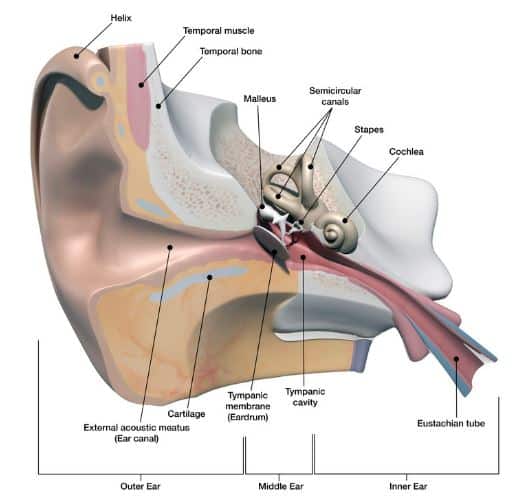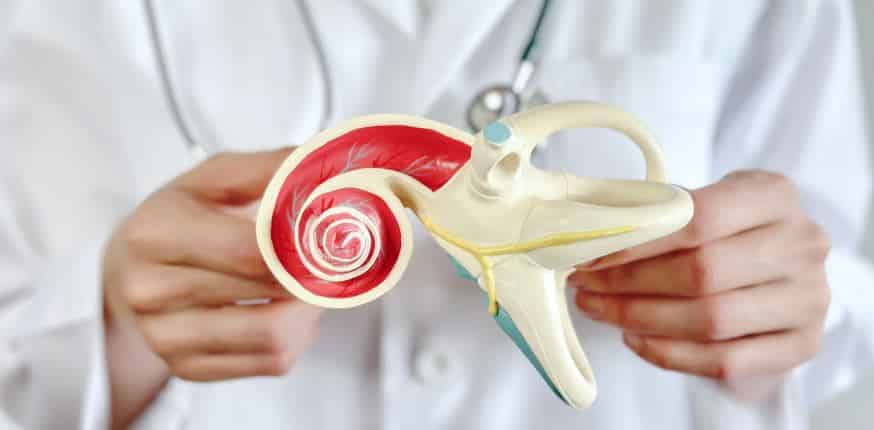Perilymph is a crucial fluid found within the inner ear, playing a significant role in maintaining both hearing and balance. In my previous Barotrauma blog, I briefly touched upon this topic, and due to its popularity, I decided to delve deeper into the subject.
The inner ear consists of two main components: the bony labyrinth and the membranous labyrinth.

The labyrinth encompasses the semicircular canals, responsible for balance control, and the cochlea, which is involved in the process of hearing. These structures reside beyond the middle ear, where the tiny ossicles—known as the malleus, incus, and stapes (hammer, anvil, and stirrup)—are located.
However, it is within the inner ear that some of the most fascinating processes occur, and these processes primarily involve fluid dynamics.
Inner Ear Fluid Dynamics
Perilymph, the fluid we will focus on, fills the space inside the bony labyrinth surrounding the membranous labyrinth. It is characterized by a higher concentration of sodium and a lower concentration of potassium. To appreciate the significance of this electrolyte imbalance, let’s recall our high school chemistry or biology lessons (although it might be a distant memory for some of us). Sodium and potassium ions are regulated by a mechanism called the sodium/potassium pump, which ensures that their levels are maintained appropriately. This pump is vital for the functioning of the inner ear, as we will soon discover.
Another fluid within the inner ear is called endolymph. The membranous labyrinth separates the perilymph and endolymph fluids. Unlike perilymph, endolymph exhibits an opposite electrolyte composition. It is high in potassium and low in sodium, resulting in a positive charge. When the fluid levels of perilymph and endolymph are balanced, hearing and balance functions work harmoniously, leading to normal hearing abilities and a stable sense of equilibrium.

However, when these fluid dynamics are disrupted, various conditions can arise. One such condition is Meniere’s Disease, also known as endolymphatic hydrops, which is the most common disorder affecting the inner ear. Meniere’s Disease can have a severe impact on an individual’s quality of life, causing symptoms such as vertigo, hearing loss, tinnitus (ringing in the ears), and a feeling of fullness or pressure in the affected ear. Treatments for Meniere’s Disease are available, but they often provide only partial relief, making it a challenging condition to manage effectively.
It’s important to note that while Meniere’s Disease primarily results from endolymphatic hydrops, which affects the fluid balance within the inner ear, there are other factors that can contribute to its development, such as genetics, allergies, and autoimmune disorders.
While we have discussed the intricate role of perilymph and endolymph in maintaining hearing and balance, it is worth mentioning that the inner ear can also be affected by viral infections. Labyrinthitis, which refers to the inflammation of the inner ear, is one such condition caused by a viral infection. This topic will be the focus of an upcoming blog, where I will explore the causes, symptoms, and potential treatments for labyrinthitis.
To summarize, the inner ear’s fluid dynamics play a vital role in our ability to hear and maintain balance. Perilymph and endolymph, with their distinct electrolyte compositions, must be in equilibrium for these functions to work properly. When this delicate balance is disrupted, conditions like Meniere’s Disease can arise, causing significant discomfort.
Understanding the inner workings of the inner ear and the impact of fluid imbalances can help shed light on these conditions and potentially lead to improved treatment options in the future.







Hi Judy, I just found this post and found it most helpful. I have suffered from Meniere’s since late 2015 and at times the vertigo has been absolutely disabling. The tinnitus and hearing loss (as compared to the vertigo) I can live with, although they are very annoying. I am a lay person with a keen interest in how things work. My father was a physician and I love medicine. Combine the two and I love reading material like what you wrote in this post. Your explaation of endolymph and perilymph fluid were easy for me to understand and helped clarify my understanding of what has been going on in my inner ear.